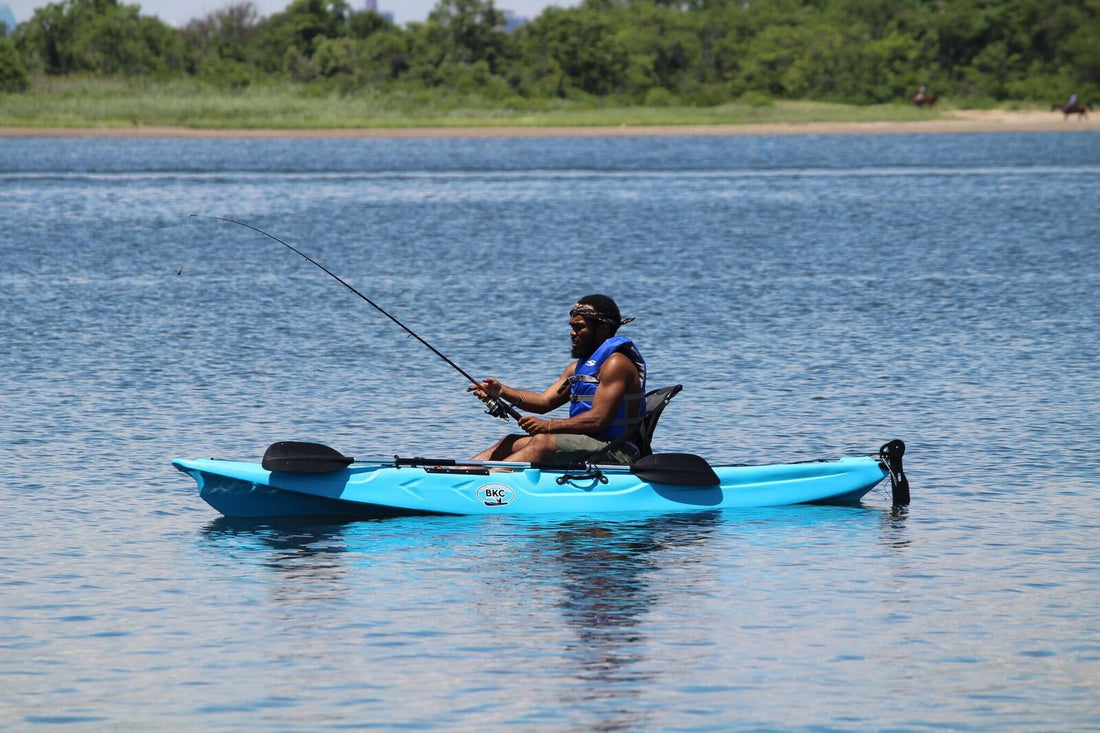We may not be the first people to share this with you and we might not be the last, but here are a few kayaking “myths” that need to be shown the door.
Myth #1: I’m too weak; kayaking is exhausting
Perhaps you have vivid memories of lugging around an old wooden rowboat or spent summers paddling a hot aluminum canoe and all you can think about is how tired and hot and cranky you got. Or maybe you see all the marketing of attractive, fit families and individuals reveling in their new kayak adventure and you do.not.relate. Don’t drink that kool-aid. Kayaking certainly requires activity, but it doesn’t have to be exhausting.
Lightweight kayaks designed for tracking make for a nice ride on the water. So, you can paddle without undue strain. And taking a bit of time to identify currents so you aren’t battling the force of nature can keep you from petering out as well. You can set the pace so if you want an aerobic hit, go for it. If you want to take your breaks and enjoy a leisurely ride, you do you.
Myth #2: I can’t take my gear with me; kayaks are too small to carry equipment
This might be a hold over from a boat angler mentality, but today’s kayaks are able to handle quite a bit. Honestly, kayak fishing exploding in popularity puts this myth to rest. Many kayaks are designed to meet the needs of those who desire to accommodate some gear.
From dry hatches to deck bungees to gear tracks, kayaks can be found to suit your needs. It never hurts to keep a minimalist mindset when you kayak and, of course, watch the weight limits, but you might be surprised at how much you can take with you when you paddle.
Myth #3: I’m going to fall out; kayaks are hard to balance
Whenever you learn a new skill there will always be a bit of a learning curve, but that doesn’t require a capsizing, submersing, dunking, soaking event. Many kayaks today, especially those designed for fishing and recreation, are remarkably stable. A wider kayak is often a more stable kayak. So look for wider beams and flatter hulls if you are concerned about stability. Granted there is a compromise to make as these more stable designs will often lose in efficiency so they aren’t as fast and don’t track as well.
Maybe your concern about capsizing is less about a soaking and more about getting stuck inside the kayak. This too is not common. Of course, you don’t have to worry about it with a sit-on-top kayak as you will just fall out of the seat. But maybe you have a vision of being suspended under the water from your sit-inside. Of course, practicing self-rescue and capsize drills, and having the right kayak safety / rescue equipment should ease your mind, but even then there isn’t anything holding you into your kayak except maybe the spray skirt, so practice releasing that quickly to ease your mind. Most kayakers find they slide right out and find themselves next to their kayak without much conscious action.
Myth #4: I can swim; kayakers don’t need a PFD
Please, please, please, don’t believe this myth. A life jacket, or personal floatation device (PFD), is a vital safety accessory that should be worn on every kayaking outing. In the event of an emergency, you don’t have time to grab and don the PFD. You need it to work right now.
Life jackets allow you to keep your head above water and your hands free to retrieve items, hold onto the kayak, guard against debris, and signal to others. Extreme situations often develop without warning, so always have a PFD on your person.
Myth #5: I plan to “flip” my kayak; kayaks are an investment.
Let’s get real for a minute. Don’t think that you can buy a kayak, load it up with accessories, and then sell it for what you paid for it. That just doesn’t happen. Kayaks are more like cars than houses.
Even if you’ve only taken it out once or twice (or not at all), it will still lose value. Like almost everything else in life, stuff depreciates. Even if you’ve loaded it up and tricked it out, your kayak is not going to get a return on investment. In fact, loading it with equipment can often narrow your target audience. Most avid kayak anglers will want to rig their own kayak with the fishing equipment of their choice.
Myth #6: I want to fish, race, whitewater, and yoga on my kayak; one kayak can do it all.
Sigh, as much as we all want to find this unicorn of a paddle craft, it just doesn’t exist. One kayak does not fit all, unfortunately. If you want speed and distance, you will need a long, narrow touring kayak. If you want stability and agility, you will trend toward a wider, shorter fishing kayak. So what’s a kayaker to do?
It will be helpful to do a little soul searching / self awareness exercise. What will you be doing the most with your kayak? That can help you decide what type of ‘yak to purchase. Alternatively, you could look for a kayak that does most of the things you are looking for. And just be aware that it will have limitations. Lastly, you could invest in multiple kayaks for different activities.
Don’t let these myths derail your kayaking journey! Get out there and experience the joy of paddling on the water, dropping a line, or just soaking it all in. Happy paddling!

